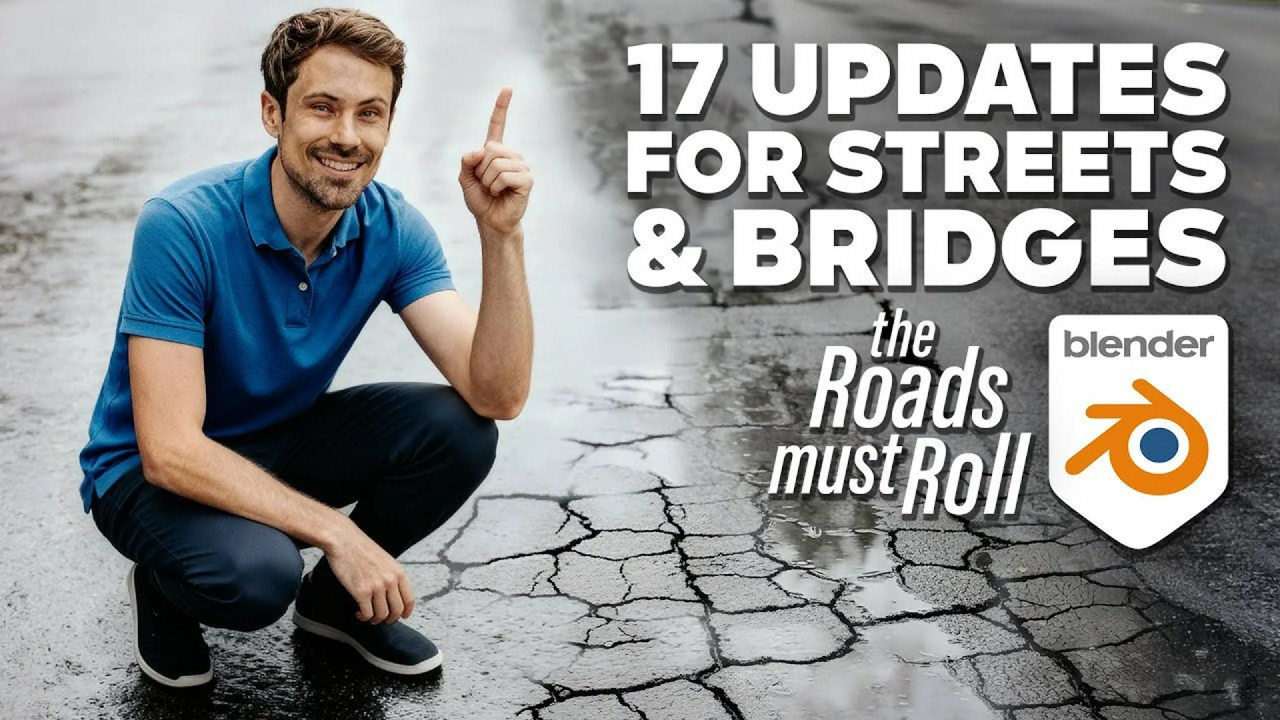Discover Samuel Krug VFX’s intricate workflow for creating stunningly photoreal mountain landscapes. This guide breaks down his process, from Houdini’s procedural terrain generation to Blender’s detailed scattering and rendering.
Creating breathtakingly realistic 3D environments is a blend of technical prowess and artistic vision. In his insightful tutorial, Samuel Krug VFX, a talented artist known for his visually stunning renders, pulls back the curtain on his detailed workflow for crafting photoreal mountain landscapes using a powerful combination of Houdini and Blender. This post summarizes his key techniques, offering a friendly guide to achieving your own epic scenes.
The Procedural Power of Houdini: Building the Foundation
Samuel Krug begins his journey in Houdini, a software renowned for its procedural capabilities. The initial steps are crucial for establishing the terrain’s fundamental forms:
- Base Noise & Erosion: He starts with a base noise shape, then applies coarse erosion to define major cliff features, scaling the terrain for pronounced height.
- Detailed Displacement: Displacement maps are used to add rock-like details to cliffs, followed by aggressive slope cleanup to prevent issues. Further passes refine these details, and a terrace modifier introduces a layered rock appearance.
- Sediment & Snow: Two erosion passes handle sediment deposition and fine channel formation. A snow node then artfully adds melty snow clusters to the peaks, creating natural variation.
Once the high-resolution height map is ready, Samuel Krug exports and re-imports it at a lower resolution (4K) within Houdini for more manageable handling, a smart optimization for complex scenes.
Texturing in Houdini: Adding Life to the Landscape
Texturing is where the terrain truly starts to come alive. The creator’s approach in Houdini focuses on natural color distribution:
- Initial Color & Distortion: A Megascans texture provides initial color diversity. This texture is then heavily distorted with noise to remove unwanted micro-details while preserving its overall values.
- Fluid Advection: A particularly interesting technique Samuel Krug employs is “fluid advection” to simulate color erosion. This rolls colors downhill, creating a natural, sediment-like appearance. Multiple passes, from coarse to gentle, build contrast between rock grains and fine sediment flows.
- Snow Integration: Finally, snow areas are made pure white, completing the preliminary texturing before moving to the rendering phase.
Bringing it to Life in Blender: Lighting, Materials & Scattering
With the detailed terrain prepped in Houdini, Samuel Krug transitions to Blender for the final assembly, lighting, and rendering.
Scene Setup and Lighting
- The generated terrain mesh is placed, with duplicates forming the background. A simple sculpted foreground plane uses the same texture for consistency.
- Lighting mimics an overcast day with sunlight peeking through, creating a cozy yet dramatic atmosphere. This subtle approach highlights the terrain’s features without harsh shadows.
Advanced Material Work
The material setup in Blender is crucial for achieving photorealism:
- Custom Displacement: Instead of the displacement modifier, a custom node setup is used to accurately transfer height information, ensuring better detail on steeper areas and seamless scattering.
- Color Correction & Bump: The Houdini-generated texture is processed through a “ground CC” node group for color correction, making it less saturated. For areas not detailed enough in Houdini, he uses bump textures with triplanar mapping, along with multiple displacement textures and a mix shader to break up streaky cliff appearances.
- Ambient Occlusion Magic: Ambient occlusion (AO) is incorporated to add depth and thickness to rock details. For cliffs, the diffuse map is multiplied with AO, adjusted for contrast and gamma, and UVs are blurred to replace stretched texture details with fine rock nuances while preserving original colors. A simpler AO-based darkening is applied to lower slopes for subtle depth.
Atmospheric Effects
Atmosphere is key to realism, and Samuel Krug achieves this with elegance:
- A single volume scatter node is driven by two lights: a strong, slightly yellow light for the environment, and a dimmer, cooler light exclusively for the volume to control fog haze and warmth.
- An overcast HDRI provides ambient light, and a sky sphere HDRI acts as a backdrop.
Scattering with Geometry Nodes
Blender’s Geometry Nodes are central to scattering foliage and rocks:
- Foliage System: A “forest weight” input allows for a gradient of vegetation, from grass and small bushes at lower weights to larger trees at higher weights. This single weight map simplifies density and transition control, effectively covering mesh seams and creating natural gradients.
- Layered Rocks: Rocks are scattered in layers of different sizes, adding subtle detail and breaking up monotonous patterns. Their colors are driven by the terrain’s texture using an attribute trick, ensuring better integration.
- VDB Clouds: Finally, VDB clouds are strategically placed around the scene for atmosphere and depth, with some even oriented upside down to utilize their most detailed sections.
The Takeaway
Samuel Krug VFX’s workflow exemplifies how combining specialized tools like Houdini for procedural generation with the robust rendering capabilities of Blender can lead to truly spectacular results. He emphasizes that the complexity of his scenes often arises from the thoughtful combination of these elements, rather than overly complicated individual steps. For more stunning work and insights, be sure to check out his Artstation portfolio or consider supporting him on Patreon for exclusive content and tutorials.
Source:
Samuel Krug VFX – How I Made this Photoreal Mountain Landscape in Blender 3D & Houdini



